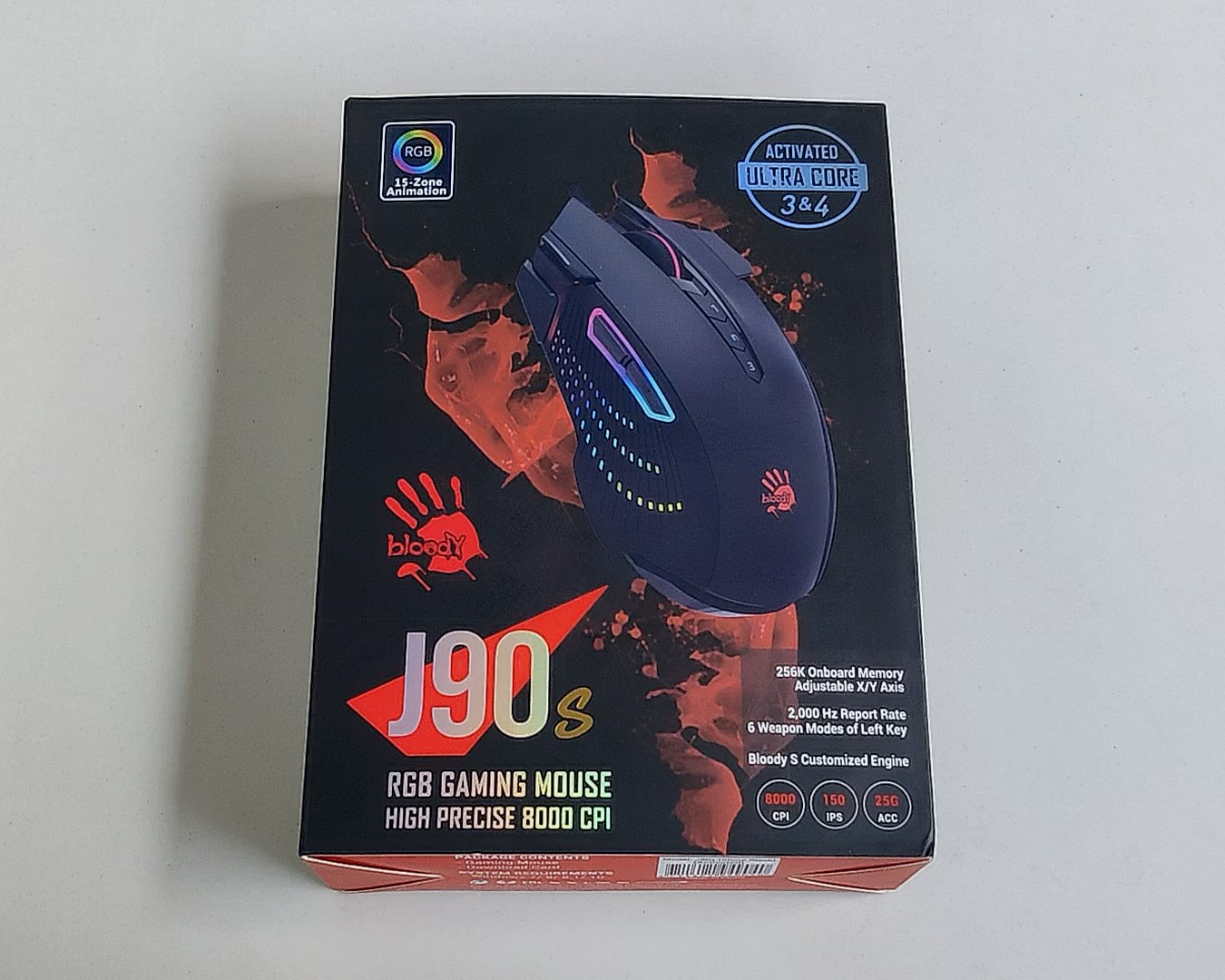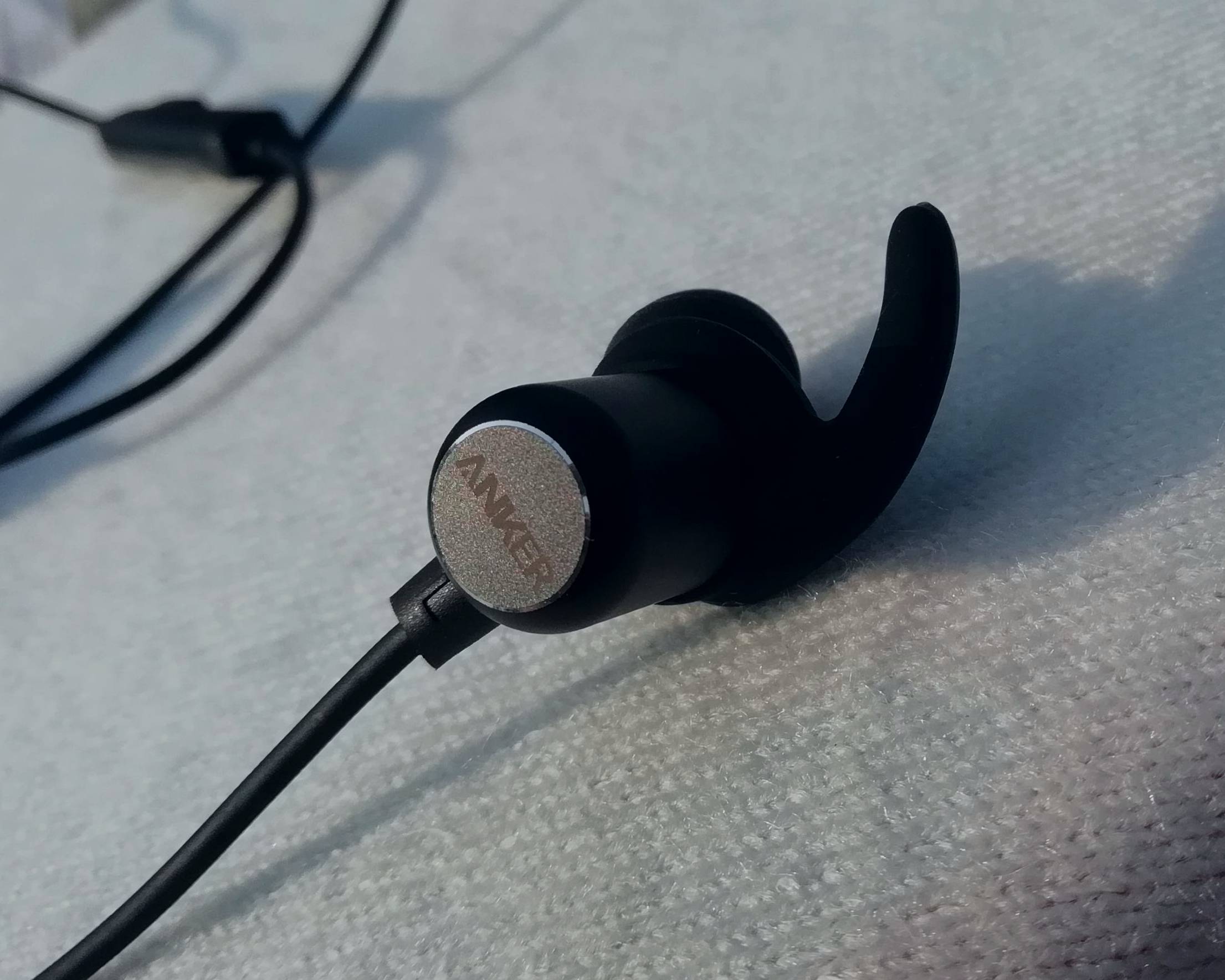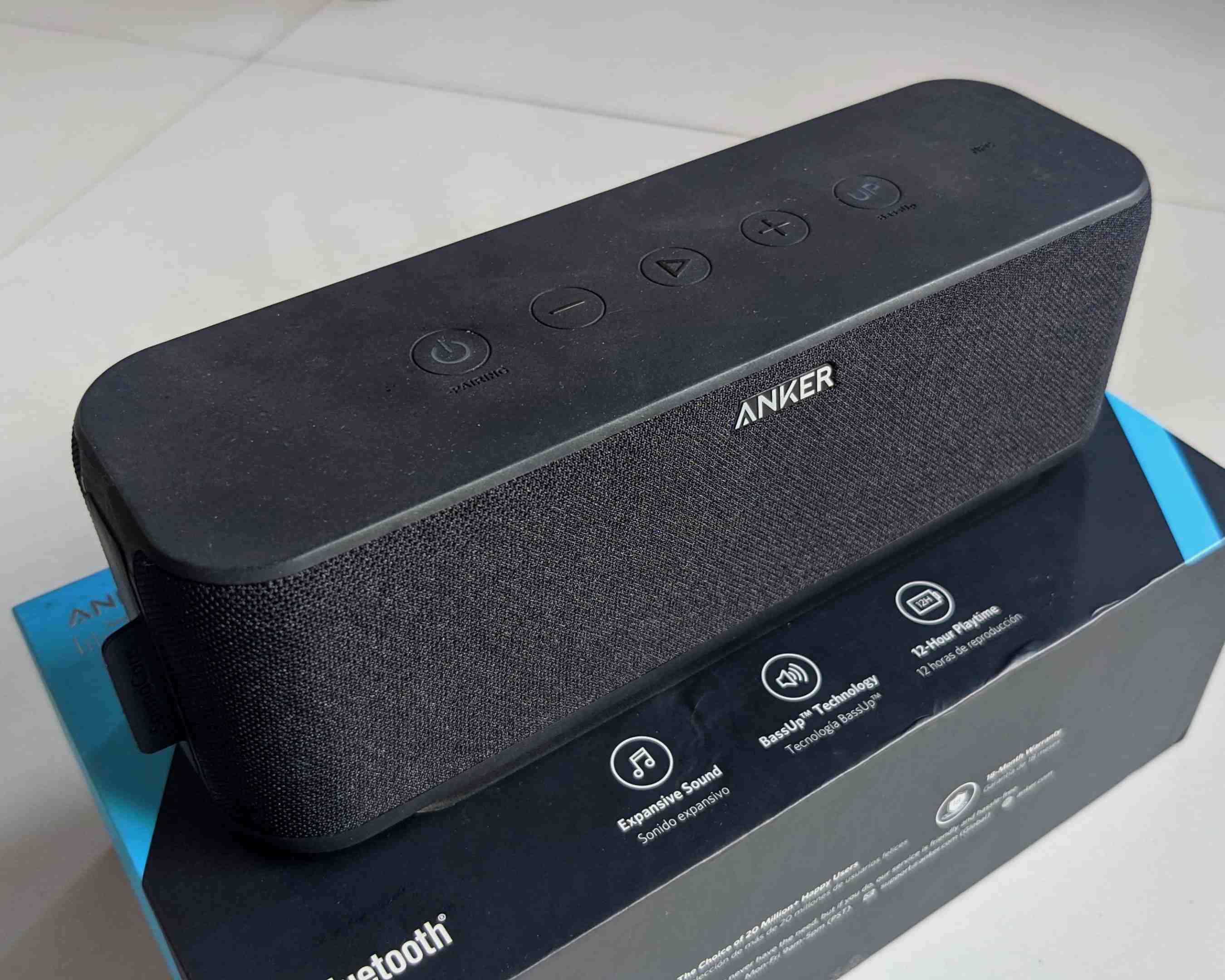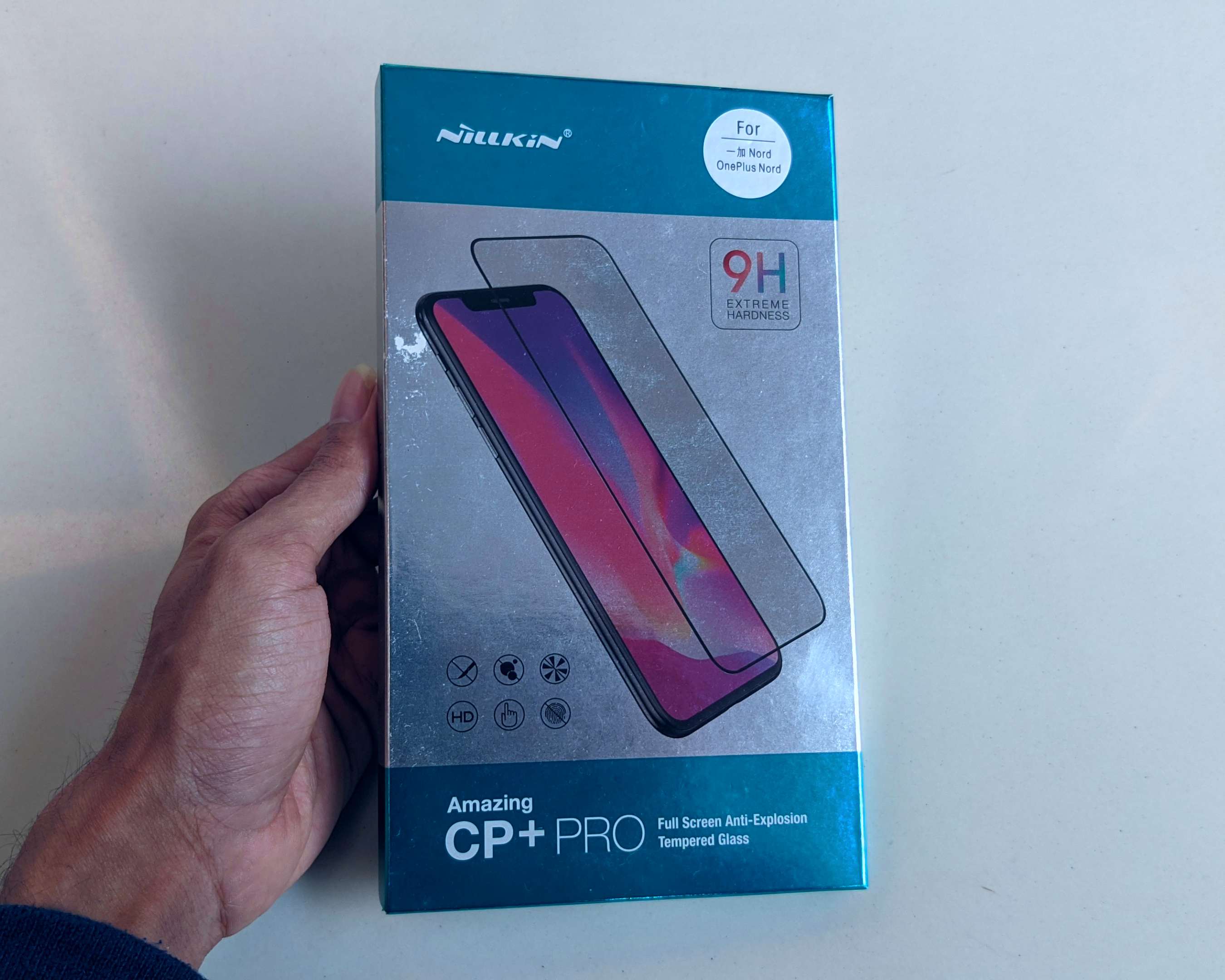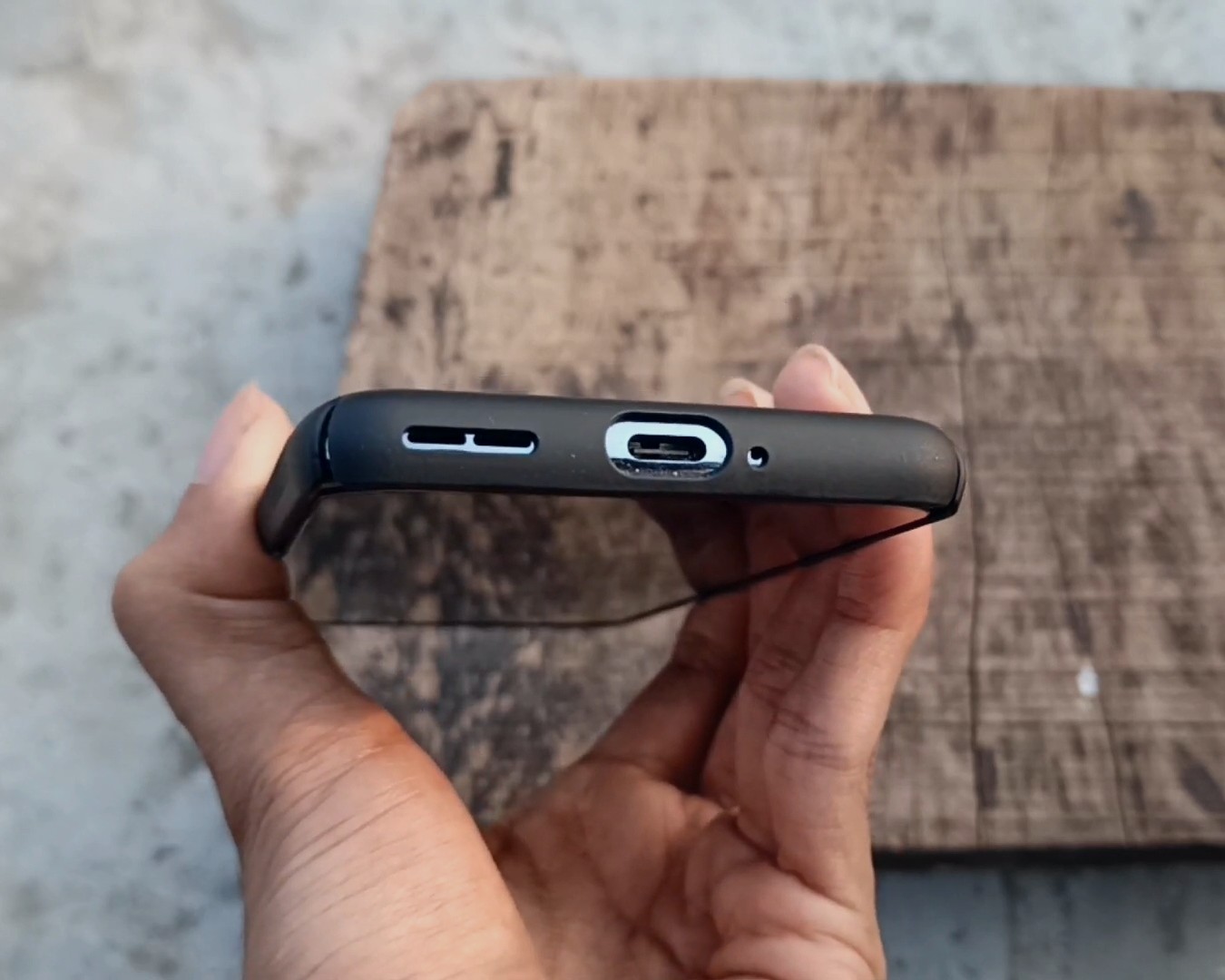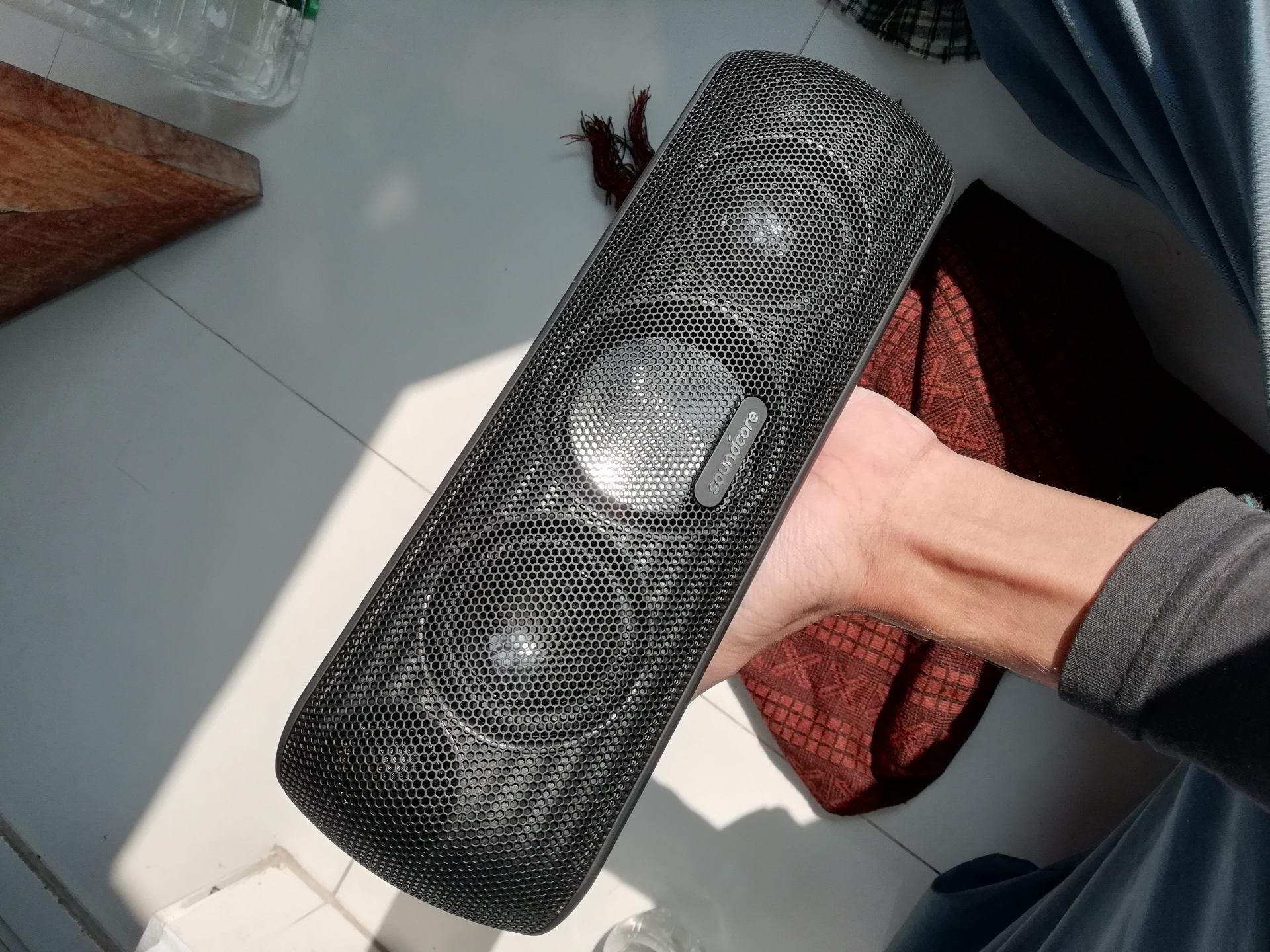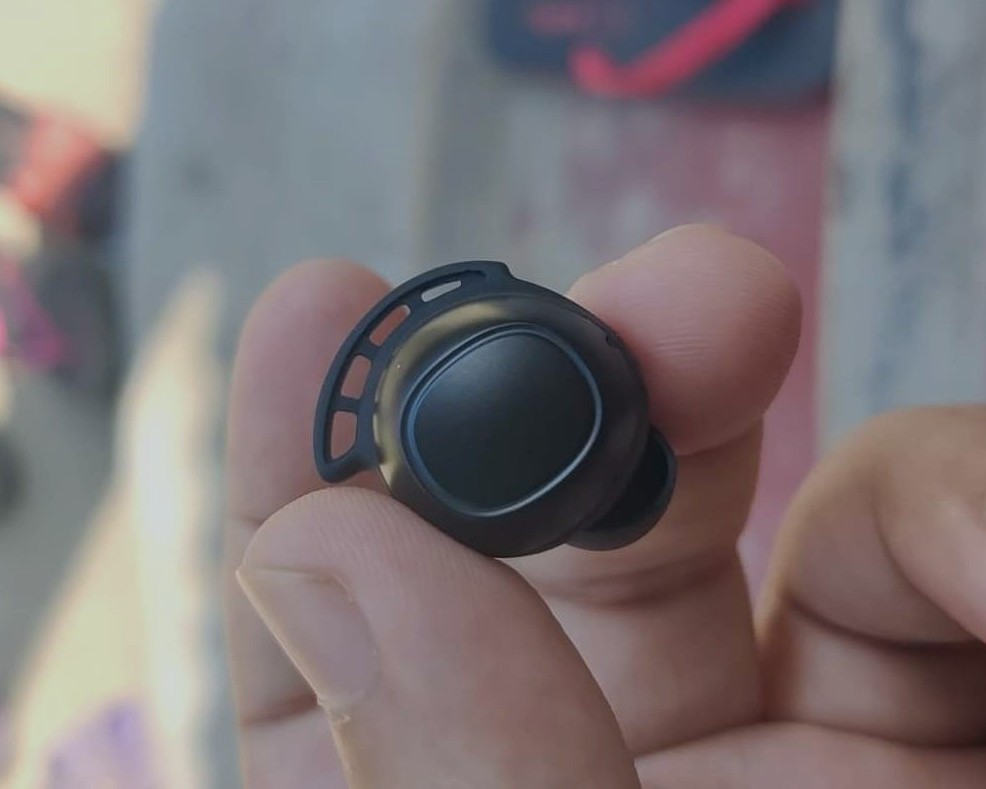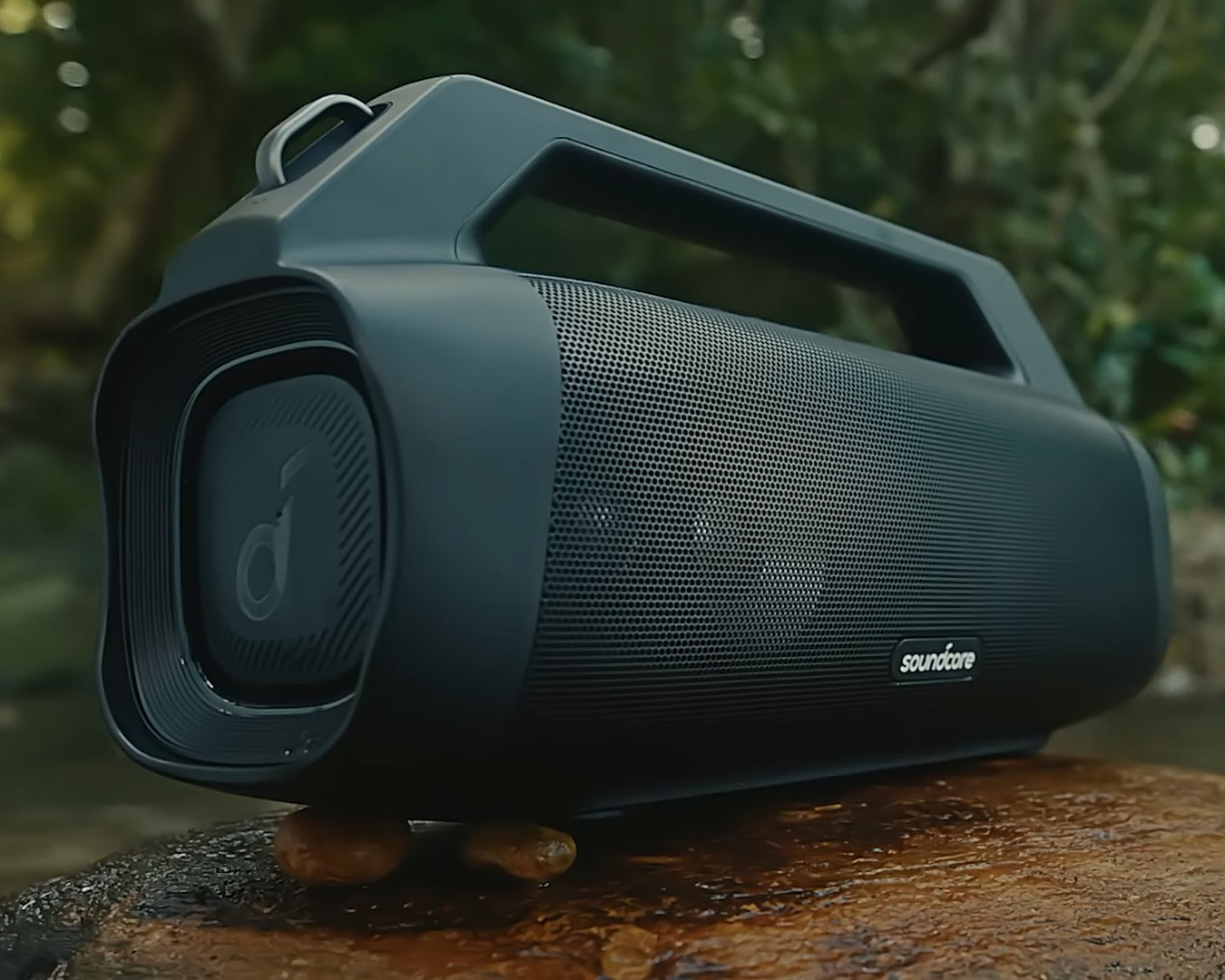Soundcore Motion X500 vs Motion X600 speaker - huge difference
Motion X600 offers better stereo separation than X500 speaker Thursday, November 30, 2023 - by Soumya Roy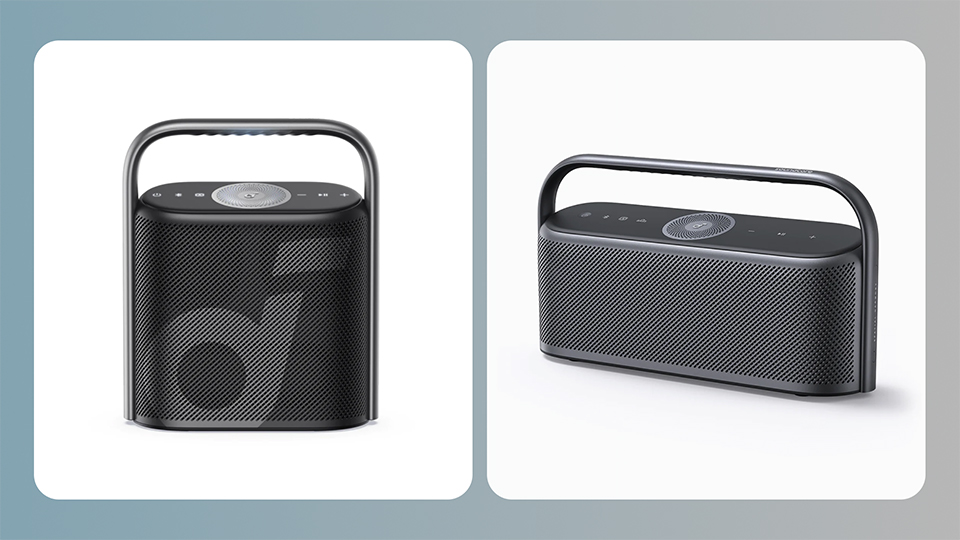
Motion X500 has been creating a lot of hype since its launch, as was the Motion X600. I am gonna be open, transparent and honest while comparing these devices. We will validate and debunk a lot of nonsense together, in this article. So, the hype was about the Spatial Audio feature, their design and probably their retail price too. I don’t mind the design and price, even though the price is way higher than what I expected. However, the misinformation around these products caught my attention. Today, I will compare both products thoroughly with technical details, like how they are different from one another - huge difference.
Overall Thoughts
Spatial mode seems to flatter the sound on purpose. It would be extra information coming out from the top driver, not missing details from the woofers. But it’s not the case here, particularly with the X500. Probably they are trying to give you some of the height information, but done in an artificially processed way. That is why it sounds cool but not for a longer period of time as it loses its originality. Maybe in the future, it will reproduce the spatial sound in a more convincing and faithful way, but not quite there for now.
Inside-the-box Comparison
I found that there is a significant difference in their packaging. Both look like they have pretty good, kinda premium-quality packaging. Also, both have an outer sleeve kinda wrap and nice foam protection inside the main black box. But the actual plastic wrap around the speaker and charging cable seems pretty different to me. Motion X500 with a smoky soft plastic wrap, but a clear transparent plastic wrap for the Motion X600 - quite a difference.
Another difference I noticed was with the charging cable. They both come with a USB Type-C to Type-C charging cable, but the design around the strain relief is pretty different. The strain relief on the Motion X500’s charging cable is much better in my opinion - nice smooth transition. Also, there is a safety guide in the Motion X600’s box but not in the X500’s box. The quick start guide is present inside both boxes. Those differences kinda don’t make sense. Check out the user manuals for Soundcore Motion X500 and X600 speakers.
Design & Build Analogy
They are under the X series and share a similar design and build. I like when companies try something new and different. Here, their overall design isn’t anything significantly different than what’s out there, but some implementation choices that they are introducing, are pretty new in portable Bluetooth speakers. The top-firing speaker isn’t flat relative to the surface, it’s slightly tilted towards you. I have mixed feelings about this choice on both.
THESE G-ADS ARE SAFE AND INFORMATIVE - PLEASE
Disable Ad BlockeR
Besides having similarities, they are quite different in their sizes and dimensions. The X500 is arguably more portable than X600. Because Motion X500 has a tall form factor vs a more wide form factor on the Motion X600. X600 is also a bit heavier at 1928 grams vs the X500’s 1644 grams. So overall, Motion X600 should be the more expensive one, but I wish it could have been 50 USD less expensive. They are very comparable, though.
There is a huge difference in terms of driver configuration - check the next section. So, the 2 front drivers on X500 are angled upwards, which I like. Motion X600’s front drivers are angled upwards and outwards - clever design. In terms of build quality, they both feel premium with metal handles and casing. There is a gripe underneath the handle and rubberized top surface. The top speaker also has a protection cover and it lights up - cool.
The bottom also has rubber stoppers from moving around. On the back, rubber-flap protection for the ports. Motion X600 has an AUX port but the X500 doesn’t have a 3.5 mm AUX-in. Make sure to close the back-flap properly before bringing it close to water. I like the overall design of these speakers. The build quality is very solid too - no complaints there.
Configuration Check
I think the price difference between these 2 speakers kinda makes sense if we check their configuration. Motion X500 has 3 active drivers and 2 passive radiators vs 5 active drivers and 1 passive rad on the Motion X600 speaker. Also, the X500 is rated at 40 watts, which is 10 watts lower than the X600. Because of the complex configuration and higher power output, the Motion X600 costs about 30 USD more at 200 USD than the X500 at 170 USD.
Both speakers are stereo, but Soundcore claims that they have 3-channel audio. It’s stereo up-mixing by taking advantage of that up-firing speaker - more on that later. So, the Motion X500 has 2 full-range drivers and 1 upward-firing driver, which is used especially for midrange. Motion X600 has a lot of stuff going on - 2 woofers, 2 tweeters and 1 upward-firing driver as active drivers. So, both have DSP doing all the fancy processing and the X600 has active crossovers as well as separate amplifiers for the dedicated drivers.

I think they are re-constructing the tracks and doing the stereo up-mixing trickery using the DSP, but not sure about proper 3-channel audio. Also, the Spatial Audio is done by playing less mids from the woofers and filling those mids using the top driver. In one sense, you can say that the woofers are tuned differently for different modes or scenarios including the top one. However, calling it Spatial Audio is a marketing tactic - nothing like Dolby Atmos.
Dolby Atmos goes beyond traditional surround sound by adding a vertical dimension to the audio experience. In a traditional surround sound system, audio is usually directed to specific channels (speakers) around the listener. Dolby Atmos, however, allows sound to move freely around the listener in a three-dimensional space, including overhead.
These ads are safe, informative and interesting. Turn off ad-blocker for this website. Ad revenue helps to keep the site alive.
Please Disable Ad BlockeR
Let me give a little more information about the driver's size. The X500 has 50 mm woofers and 40 mm top-driver. On the contrary, X600 has 60 mm woofers, 27 mm tweeters and 50 mm top driver - check out the source video from Alan Ross Reviews.
Sound Quality Comparison
One thing I like about these speakers is, they are pretty smart with lots of flexibility. Even if you don’t like the way Spatial Audio sounds on these devices, you can go back to custom EQ anytime - tweak at your heart's content. There are 3 major modes or separate tunings on both of them. The default is spatial signature, then spatial dynamic and custom.
Spatial Signature
The algorithm behind their Spatial Audio is gonna be pretty much the same for both of them, but the huge difference in configuration will kick in. It is kind of funny that by default these speakers have a dull sound signature, which is their signature mode. This is a similar kind of mode as the spatial mode with bass-up off, on the X600. And the spatial dynamic on the X500 is similar to spatial mode with bass-up on, on the X600 speaker.
The Soundcore app seems to be pretty different from one another. There is no bass-up button on the Motion X500. Also, the spatial effect is only limited to the spatial signature and spatial dynamic mode. This is not the case in Motion X600, it can have the spatial effect on, for all the presets. You can keep the spatial audio button turned on while toggling through the presets. So, it seems to be pretty messy to deal with as they are under same series.
The custom EQ mode is also different because the X600 can have Spatial Audio processing on top of custom EQ, but the X500 cannot have that in custom mode. X500 is normal stereo in custom EQ mode. Also there is no voice, treble boost or balanced mode for the Motion X500 in the app. This makes the whole experience kinda inconsistent and disjointed.
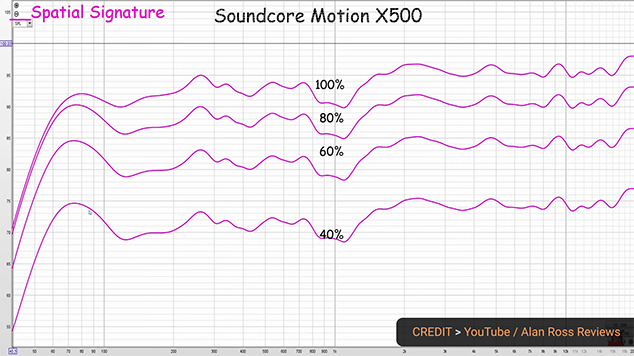
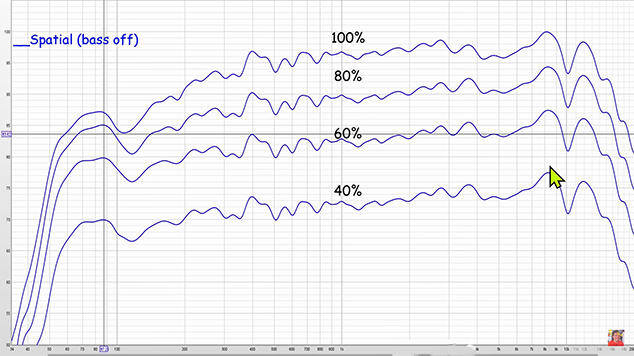
When in this spatial default mode, Motion X500 has like 5 dB more in the bass area. This makes the X600 sounding thin and crystal clear. But clear as crystal isn’t any better when there is a lack of bass. To be clear, I am comparing both in their spatial mode, spatial signature on X500 is being compared to X600’s spatial mode with bass-up off. This is a fair comparison to see the huge difference in their tuning. Spatial mode with dynamic bass boost will be checked out in the next sub-section. So, both have their bass peaks at around 70 Hz.
These ads are safe, informative and interesting. Turn off ad-blocker for this website. Ad revenue helps to keep the site alive.
Please Disable Ad BlockeR
These are mid-bass dominant speakers. There is a huge difference in their frequency response. Motion X500 has a wide suck-out around 1 KHz, where the up-firing driver tries to fill up. But depending on the angle you are listening, the mids can be perceived pretty differently. On the Motion X600, there are 2 peaks in the high-end - around 8 and 12 KHz. Also, the high-end is peaking significantly higher than the low-end. This is the reason why the X500 sounds warmer than X600. There is a treble extension towards 20 KHz, which helps with the fat mid-bass on the X500. However, there is a roll-off after 12 KHz on the Motion X600, which doesn’t contribute to the perceived sound that much - very different tunings.
So, I think the Motion X500 sounds more right and balanced even though the spatial effect is less noticeable when compared to the pricy one. The more expensive X600 has more separating space between the left and right drivers, which gives a better stereo separation. But the bright nature can get a bit tiring over time vs slightly warmer X500.
Spatial Dynamic
Here for the Motion X500, it means that the BASS is on, as it doesn’t have a dedicated bass-up button or feature like the X600. This mode is comparable to the Spatial Mode with bass-up turned on, on the X600 speaker. So, the bass region gets pretty boosted on both of them, but the frequency response shows that it’s more prominent on the X500.
The bass boost or enhancement is around 8 dB more than the non-dynamic mode on both. Even though the gain in the bass frequencies is kind of similar, Motion X500 sounds more bass-dominant for its V-shaped sound signature. Spatial dynamic is the more dynamic mode here and it makes the sound more full-bodied on both of them.
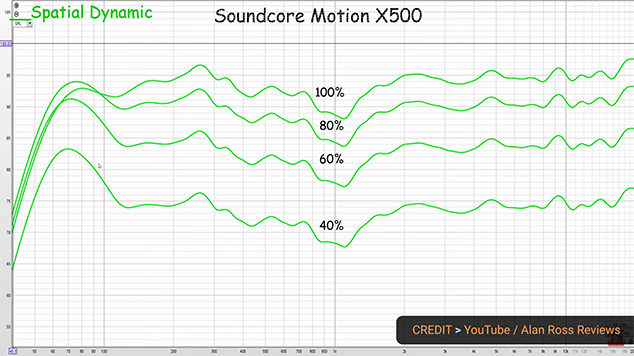
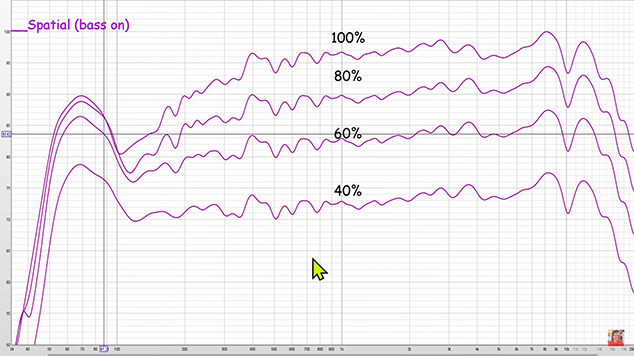
There is more sparkle, openness and airiness going on with the Motion X600. If you listen to bright tracks with emphasis on the high-end, the X600 can make you feel too sparkly, sizzling and irritating. You can tone down the harshness using the custom EQ. On the other hand, X500 cannot do custom while also dealing with Spatial Audio processing at the same time. A software update can enable that feature but - who knows ..?
You will be missing out on some mids depending on the position you are listening to the Motion X500, but the X600 covers more details. The soundstage and spatial effects are a bit better on the X600. The perception of immersiveness is slightly better too. Most of this comes down to their design differences. They are cleverly designed and priced.
Custom EQ Mode
Custom EQ mode is the basic stereo mode for the Motion X500. However, it’s a significant difference on the X600 because you can turn on spatial audio for the X600 while tweaking the sound using custom 9-band parametric EQ. So in spatial mode, the top-firing speaker was covering some of the mids for the X500, but it’s not doing that in custom mode.
THESE G-ADS ARE SAFE AND INFORMATIVE - PLEASE
Disable Ad BlockeR
Huge difference between the two in terms of navigation. The Spatial Audio button seems to toggle between the presets on the Motion X500, but it only means Spatial Audio on/off for the X600. You are gonna get used to it but why so different under the same X series ..? You can take full advantage of the app by dealing with the custom equalizer. The EQ works well and you can modify the sound signature in a lot of different ways.
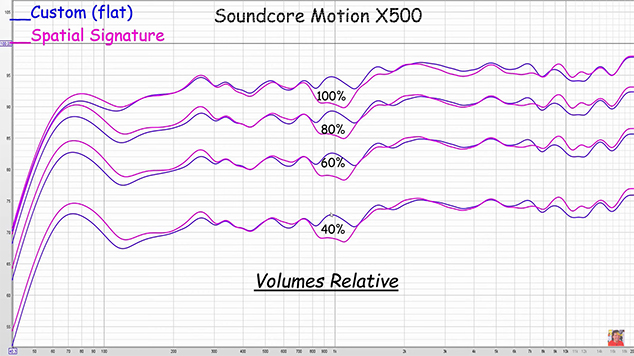
Motion X600 has a pretty uncontrolled bass response, so you should use the custom eq. Bring the mids and highs down, also don’t use bass-up at higher volume if it’s distorting badly. Motion X600 has 1 passive radiator vs 2 passive rads on X500. The single radiator is pushed pretty hard, which is why there is noticeable distortion on X600 at higher volumes.
Debunking Spatial Audio
This setup is just giving you a little bit more height information and the stereo effect is making the sound a bit bigger and wider than it actually is when compared with normal stereo speakers. So, nothing like normal surround sound or spatial audio.
A soundtrack needs to be created differently than a normal stereo track to have a spatial audio effect. This is because spatial audio requires more information than stereo audio in order to create a three-dimensional sound field.
A two-channel track can have a spatial audio effect, but it will not be as immersive as a track that was specifically designed for spatial audio. This is because a two-channel track only has information about the left and right channels, while a spatial audio track has additional information about the height and distance of the sound sources.
To create a spatial audio effect from a two-channel track, the audio signal must be processed to add the missing information. This can be done using a technique called upmixing. Upmixing involves using algorithms to estimate the height and distance of the sound sources, and then adding this information to the stereo signal.
THESE G-ADS ARE SAFE AND INFORMATIVE - PLEASE
Disable Ad BlockeR
So, a regeneration of the original track is required. This is not how the original source was designed to be played. Adding extra information artificially can make most tracks sound very unnatural. This is what going on with these X series speakers. After listening for 10 minutes, they start sounding weird - sometimes hit or miss.
Features & Battery Comparison
These speakers aren’t doing anything groundbreaking. But as portable speakers, they offer some special characteristics, which make them quite unique. Both the Motion X600 and X500 have plenty enough features to play with. They both share the same DNA, which makes them have a similar set of features. By digging deeper you will be able to find out some significant differences, like I described some of them before.
So, both are IPX7 rated, meaning only waterproof, but not dustproof. You can submerge them underwater up to 1 meter for 30 minutes, make sure you close the back-flap. Both support Type-C charging and also come with an updated USB-C to C cable. But only the X600 has a 3.5 mm AUX-in port. They don’t support power bank feature. The higher-end codec for them is the LDAC by Sony. Soundcore is selling it by saying 3 times more details, which is just not true. This is about 3 times more bitrate than basic SBC codec, which is totally different than producing 3 times more details. They can play high-res tracks over Bluetooth.
The Bluetooth version is BT 5.3 on both. You need a source that can deliver the LDAC-standard high bitrate (990 kbps) and an LDAC-supported device to take advantage of the resolution and depth. They don’t have NFC. The new Motion X500 has a unique feature of customizing the top driver lighting. You can set different colors for the LEDs to understand which mode you are in. They both support TWS paring. Especially the X600 has dedicated tweeters.

Now let's talk about the batteries ..! I am writing ..! The Motion X600 has a 46.1 Wh and the X500 has a 35.3 Wh battery pack. Both claim to have 12 hours of playback time on average listening volume (around 50 percent) while in normal signature mode without bass-up and lights. Motion X600 has more raw power that’s why the battery pack’s capacity is also higher. They both can be charged at 5 volts 3 amps, taking around 6 hours to top up.
Conclusion - Pick Wisely
I think these speakers can give you a little bit of wow moment for a short period of time. But with their fancy processing, it's not real and faithful enough to enjoy them for a long period of time. If you get bored or looking for something new, probably they have got the flexibility to excite you up. The normal stereo mode on both is pretty good with good bass, mids and treble. But they have huge difference in their tuning and frequency response.
One is pretty bright and treble-heavy, check out the sound quality comparison section where I gave you all the details you need to know about their sound signature. But they are very pricey, to be honest. You have got a lot of other options if you don't need the Spatial Audio processing. The Soundcore Motion Boom is an amazing speaker that will give you much deeper bass than these speakers. Another one is the Motion+, which excels in high-end details - check my Motion+ review. Also, check out the Motion Boom Plus.
These ads are safe, informative and interesting. Turn off ad-blocker for this website. Ad revenue helps to keep the site alive.
Please Disable Ad BlockeR
The X600 clearly wins in configuration, but the sound quality is subjective. Better spatial effects on the X600 but better bass with less distortion on the X500. Both have premium build quality and good design. So, pick the right one wisely, don’t waste your hard-earned money on something that clearly doesn’t deserve it. Check out X500 and X600’s official product page for more not-so-transparent information and user manuals.
If you are interested in even smaller speakers - check out my Soundcore Motion 300 vs Bose Soundlink Flex article. Both did well in a head-to-head comparison.
motion+ review article motion+ review youtube
nillkin super frosted matte case review
motion+ bass response
